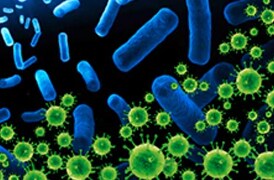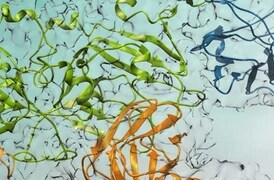Infectious Disease Research
Cryo-EM techniques enable multiscale observations of 3D biological structures in their near-native states, informing faster, more efficient development of therapeutics.
The Thermo Scientific Ceta-D Camera is a scintillator-based camera optimized for low-dose diffraction data collection. It is ideal for working with dose-sensitive materials, such as proteins, pharmaceutical molecules, and organic materials.
The camera’s high sensitivity allows for reliable detection of high-resolution, low-intensity diffraction peaks, and its high signal-to-noise ratio enables accurate measurement of the integrated peak intensity. Both of these properties are prerequisites for obtaining high-resolution structural information. After acquisition, the diffraction patterns and metadata are readily available for processing (similar to standard X-ray diffraction data), using software packages like DIALS or XDS. Resolutions better than 1 Å have been reported.
MicroED package
Coupled with the Ceta-D Camera, the MicroED Package provides all the necessary elements to perform micro electron diffraction, either on a new instrument or as a retrofit onto an existing tool. It includes:
The MicroED Package is a perfect match with the CETA-D Camera but may also be combined with other Thermo Scientific cameras for special application requirements.
| Sensor | 4,096 x 4,096, 14 μm pixel CMOS |
| Camera architecture | Fiber optic coupled scintillator (1:1) frame rate Standard: 4k × 4k, 2 fps; 2k × 2k, 8 fps; 1k × 1k, 18 fps Noise reduction: 4k × 4k, 2 fps; 2k × 2k, 6 fps; 1k × 1k, 6 fps |
| Imaging performance | In 4k × 4k mode: DQE at 0.1 Nyquist: > 26% at 300 kV, > 40% at 200 kV |
| Duty cycle in movie mode | 100% in rolling shutter mode |
| Conversion efficiency | >26 counts/primary electron at 200 kV >22 counts/primary electron at 300 kV |
| Mounting position | On-axis, bottom mounted, retractable |
Cryo-EM techniques enable multiscale observations of 3D biological structures in their near-native states, informing faster, more efficient development of therapeutics.
Learn how to take advantage of rational drug design for many major drug target classes, leading to best-in-class drugs.

MicroED
MicroED is an exciting new technique with applications in the structural determination of small molecules and protein. With this method, atomic details can be extracted from individual nanocrystals (<200 nm in size), even in a heterogeneous mixture.

MicroED
MicroED is an exciting new technique with applications in the structural determination of small molecules and protein. With this method, atomic details can be extracted from individual nanocrystals (<200 nm in size), even in a heterogeneous mixture.
To ensure optimal system performance, we provide you access to a world-class network of field service experts, technical support, and certified spare parts.


